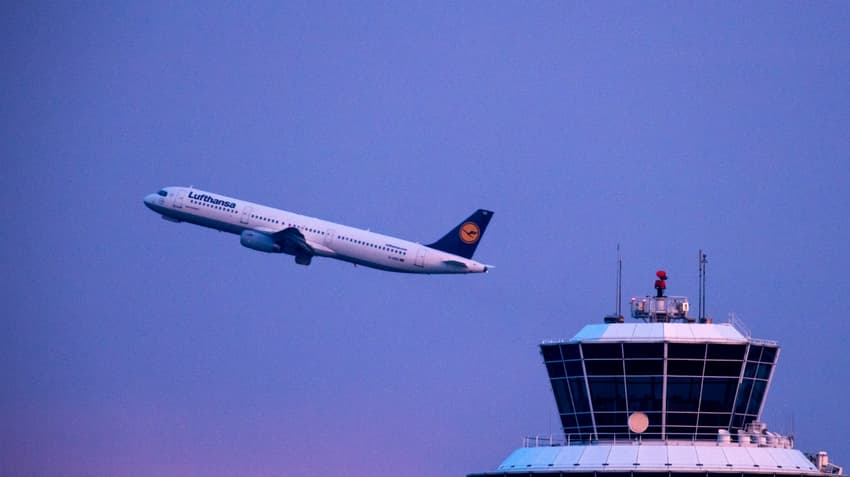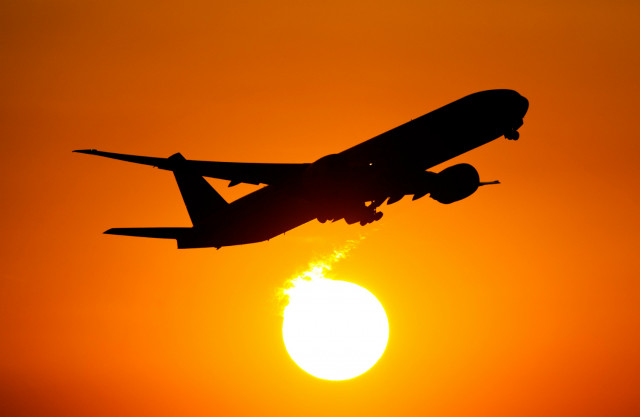'I'm surprised nothing's happened yet': How planes in Germany are flying dangerously close to each other

Aircraft are repeatedly flying too close to each other in German airspace and increasing the chance of collisions, a new report has found.
In the past four years, there have been more than 170 "potentially dangerous approaches by aircraft", according to the Federal Office for Aircraft Accident Investigation (BFU) and reported by German broadcaster NDR on Tuesday.
The majority of these alarming incidents came from collision warning systems, which ask commercial pilots to change course immediately when a risk is detected.
In other cases, dangerous approaches and near-collisions were observed by pilots who weren't warned beforehand.
According to NDR, aviation experts believe the total figures are even higher because reports are also received by other authorities responsible for aviation. There's also a considerable number of unreported incidents.
The reasons for dangerous approaches are manifold: there are more planes in the sky and collision warning systems belonging to large and small aircraft are incompatible. Plus there's a lack of radio technology among private pilots, but also commercial pilots who, due to time pressure, take shortcuts through airspaces shared with glider pilots.
These close calls occur repeatedly in the so-called mixed airspace, a zone used by large and small aircraft, in the wider vicinity of commercial airports.
READ ALSO: Trains instead of planes: Could domestic flights in Germany really become 'obsolute'?
'Suddenly the large lettering "Lufthansa" appeared'
In 2018, for example, in North Rhine-Westphalia alone there were at least eight cases of approaches between commercial aircraft and gliders in the vicinity of the Weeze and Paderborn airports in which passenger planes had to move to avoid a collision.
Meanwhile, on July 23rd this year in Schleswig-Holstein, south of Lübeck, an Airbus A321 from Lufthansa and a glider missed each other by only a few metres.
"Suddenly the large lettering 'Lufthansa' appeared next to me at a distance of about 40 to 60 metres," Anne-Sophie Polz, the glider pilot said as she described the encounter with the 175-seat aircraft approaching Hamburg Airport.
A preliminary investigation report by the BFU found both the glider pilot and the Lufthansa pilot were allowed to be in the airspace concerned. However, both planes had apparently not been able to detect each other due to different warning systems.
 Photo: DPA
Photo: DPA
Due to a lack of technical equipment, the glider could neither be detected by the Lufthansa aircraft nor by the air traffic controller on the radar. A Lufthansa spokesman said the firm was supporting the investigation into the incident but did not comment further.
Increase in air traffic
Christoph Strümpfel of the Institute of Aerospace at TU Berlin said the increase in air traffic was an important factor and called for stricter rules.
"German airspace is one of the most frequented airspaces in Europe," he said.
Felix Gottwald of the Cockpit Association said the danger of a collision happening between a passenger aircraft and a smaller aircraft is realistic.
"I am surprised that nothing has happened yet, because we have enough reports where it's been very close, where aircraft just happened to fly past each other.
"That could have been a crash. So it's just a question of when something like that happens and not whether."
Most aviation experts take a critical view of an obligation demanded by the BFU two years ago to equip all aircraft with so-called transponders – transmitters that broadcast the position and course of an aircraft.
At the beginning of 2019, German air navigation services (DFS) carried out a simulation and found this would lead to an overload of radio frequencies and could harm flight safety.
Germany's Transport Ministry told NDR that it was currently investigating the issues with the help of experts. A spokesperson said: "As part of flight safety work, the relevant points for possible action are being identified and considered."
Vocabulary
Airspace - (der) Luftraum
Approaches - (die) Annäherungen
Aviation experts - (die) Luftfahrtexperten
Commercial aircraft (der) Verkehrsflugzeug
Glider - (der) Segelflieger
We're aiming to help our readers improve their German by translating vocabulary from some of our news stories. Did you find this article useful? Let us know.
Comments
See Also
In the past four years, there have been more than 170 "potentially dangerous approaches by aircraft", according to the Federal Office for Aircraft Accident Investigation (BFU) and reported by German broadcaster NDR on Tuesday.
The majority of these alarming incidents came from collision warning systems, which ask commercial pilots to change course immediately when a risk is detected.
In other cases, dangerous approaches and near-collisions were observed by pilots who weren't warned beforehand.
According to NDR, aviation experts believe the total figures are even higher because reports are also received by other authorities responsible for aviation. There's also a considerable number of unreported incidents.
The reasons for dangerous approaches are manifold: there are more planes in the sky and collision warning systems belonging to large and small aircraft are incompatible. Plus there's a lack of radio technology among private pilots, but also commercial pilots who, due to time pressure, take shortcuts through airspaces shared with glider pilots.
These close calls occur repeatedly in the so-called mixed airspace, a zone used by large and small aircraft, in the wider vicinity of commercial airports.
READ ALSO: Trains instead of planes: Could domestic flights in Germany really become 'obsolute'?
'Suddenly the large lettering "Lufthansa" appeared'
In 2018, for example, in North Rhine-Westphalia alone there were at least eight cases of approaches between commercial aircraft and gliders in the vicinity of the Weeze and Paderborn airports in which passenger planes had to move to avoid a collision.
Meanwhile, on July 23rd this year in Schleswig-Holstein, south of Lübeck, an Airbus A321 from Lufthansa and a glider missed each other by only a few metres.
"Suddenly the large lettering 'Lufthansa' appeared next to me at a distance of about 40 to 60 metres," Anne-Sophie Polz, the glider pilot said as she described the encounter with the 175-seat aircraft approaching Hamburg Airport.
A preliminary investigation report by the BFU found both the glider pilot and the Lufthansa pilot were allowed to be in the airspace concerned. However, both planes had apparently not been able to detect each other due to different warning systems.
 Photo: DPA
Photo: DPA
Due to a lack of technical equipment, the glider could neither be detected by the Lufthansa aircraft nor by the air traffic controller on the radar. A Lufthansa spokesman said the firm was supporting the investigation into the incident but did not comment further.
Increase in air traffic
Christoph Strümpfel of the Institute of Aerospace at TU Berlin said the increase in air traffic was an important factor and called for stricter rules.
"German airspace is one of the most frequented airspaces in Europe," he said.
Felix Gottwald of the Cockpit Association said the danger of a collision happening between a passenger aircraft and a smaller aircraft is realistic.
"I am surprised that nothing has happened yet, because we have enough reports where it's been very close, where aircraft just happened to fly past each other.
"That could have been a crash. So it's just a question of when something like that happens and not whether."
Most aviation experts take a critical view of an obligation demanded by the BFU two years ago to equip all aircraft with so-called transponders – transmitters that broadcast the position and course of an aircraft.
At the beginning of 2019, German air navigation services (DFS) carried out a simulation and found this would lead to an overload of radio frequencies and could harm flight safety.
Germany's Transport Ministry told NDR that it was currently investigating the issues with the help of experts. A spokesperson said: "As part of flight safety work, the relevant points for possible action are being identified and considered."
Vocabulary
Airspace - (der) Luftraum
Approaches - (die) Annäherungen
Aviation experts - (die) Luftfahrtexperten
Commercial aircraft (der) Verkehrsflugzeug
Glider - (der) Segelflieger
We're aiming to help our readers improve their German by translating vocabulary from some of our news stories. Did you find this article useful? Let us know.
Join the conversation in our comments section below. Share your own views and experience and if you have a question or suggestion for our journalists then email us at [email protected].
Please keep comments civil, constructive and on topic – and make sure to read our terms of use before getting involved.
Please log in here to leave a comment.